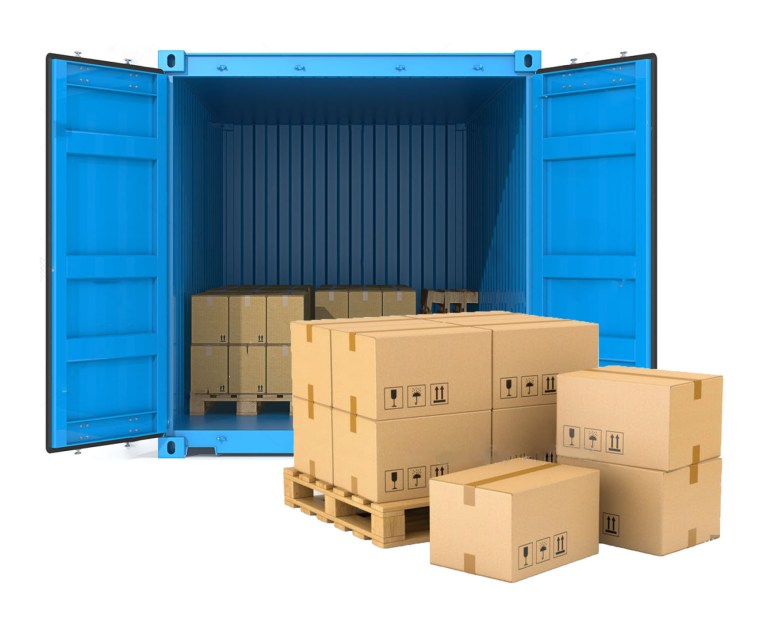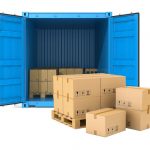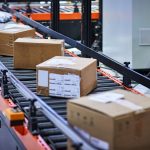Less than Container Load (LCL) cargo shipping allows exporters in Hong Kong to move smaller volumes of goods without paying for an entire container. By consolidating multiple shipments into one container, LCL makes international trade accessible and cost-efficient for businesses that do not require Full Container Load (FCL) services. The process involves cargo booking, consolidation at a container freight station, customs clearance, ocean transport, deconsolidation at the destination, and final delivery. While costs are shared among shippers, they include freight charges, documentation, handling fees, and last-mile delivery. For example, shipping 2 cubic meters from Hong Kong to Singapore can cost a fraction of a full container. However, exporters must be aware of risks such as delays, hidden charges, or potential cargo damage. With careful planning and the right logistics partner, LCL shipping is a practical, flexible solution for Hong Kong exporters looking to optimize costs while expanding their global reach.
What is LCL Cargo Shipping?
Less than Container Load (LCL) shipping is a freight option where exporters share container space with other shippers, rather than paying for a full container. Each shipment is measured by volume (cubic meters/CBM) and weight, and costs are calculated based on the space it occupies inside the shared container.
This model is particularly valuable for small and medium-sized businesses in Hong Kong, where export volumes may not always justify the expense of a Full Container Load (FCL). For example, an exporter with only 3 CBM of goods would otherwise need to book a 20-foot container that can hold over 28 CBM—paying for unused space. With LCL, that same shipment can be consolidated alongside others, dramatically lowering costs.
LCL shipping is widely used in Hong Kong due to its role as a major global logistics hub, connecting exporters to Southeast Asia, Europe, and North America. It is especially suitable when:
- Shipments are too small for FCL.
- Exporters require more frequent shipping instead of waiting to fill a container.
- Businesses want to reduce inventory and storage costs by shipping smaller, regular batches.
The LCL Shipping Process Step by Step
1. Booking and Cargo Consolidation
Exporters begin by booking space with a freight forwarder or logistics company. Instead of reserving an entire container, they reserve only the volume they need. At this stage, exporters provide shipment details such as cargo type, dimensions, and weight.
Once booked, the cargo is moved to a Container Freight Station (CFS), where it is consolidated with goods from other exporters. The freight forwarder groups multiple shipments bound for the same destination into one container, optimizing space and costs.
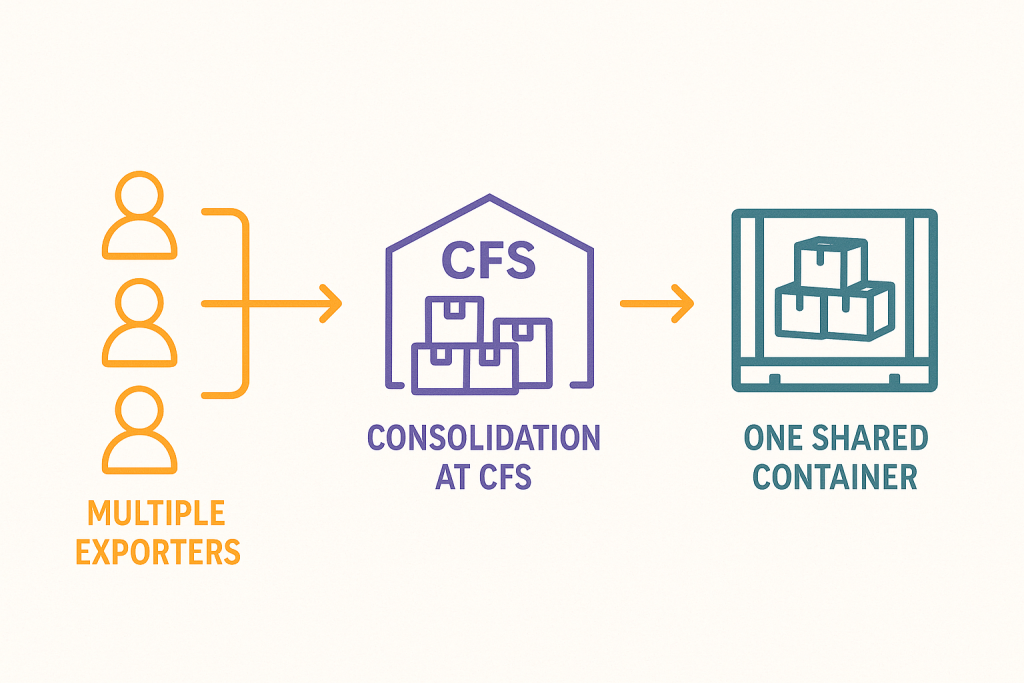
2. Container Loading and Documentation
At the CFS, goods are packed, secured, and loaded into the container. Proper documentation is essential, including:
- Bill of Lading (B/L): proof of shipment.
- Packing List: details of the cargo.
- Commercial Invoice: for customs valuation.
- Other document: Import/Export License, Non-licence letter , NON-DG letter , Certificate of Origin etc.
These documents must be accurate to avoid customs delays or fines. For further information, you can also check our previous article that talking about import/export. Step-by-Step Guide to Importing/Exporting with Freight Forwarders in Hong Kong. Also you can check the latest update in Hong Kong Customs – Import and Export Documentation
3. Customs Clearance and Ocean Transport
Before departure, the shipment undergoes export customs clearance in Hong Kong. The consolidated container is then loaded onto a vessel for international transport.
Upon arrival at the destination port, the container must clear import customs, where duties and taxes are assessed. The speed of clearance often depends on the accuracy of shipping documents and compliance with local regulations.
4. Deconsolidation and Final Delivery
Once cleared, the container is moved to a destination CFS, where it is deconsolidated. Each shipment is separated, checked, and prepared for distribution. Finally, cargo is delivered to the consignee’s warehouse or facility.
This deconsolidation stage is where delays can sometimes occur, as multiple shipments must be handled and sorted. Reliable logistics providers minimize such disruptions through efficient handling and strong local networks.
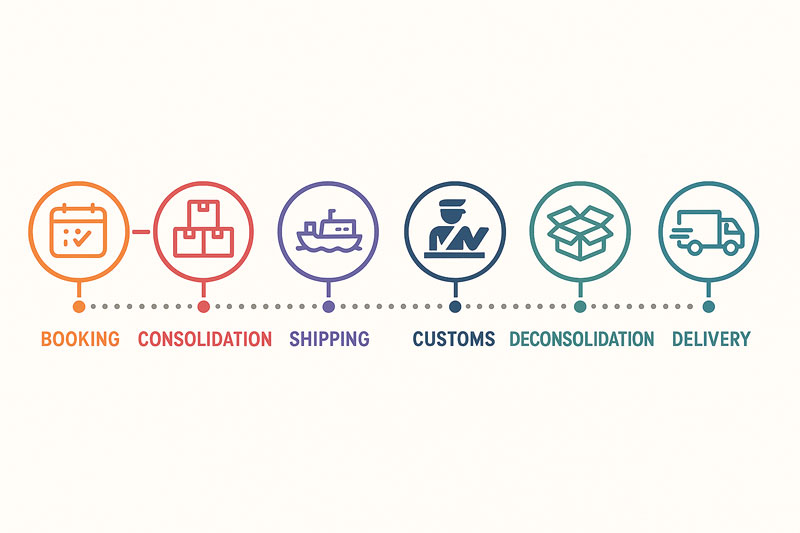
LCL Shipping Costs Explained
One of the main reasons exporters choose LCL is cost efficiency. Instead of paying for an entire container, shippers only pay for the portion they use. However, LCL costs include more than just ocean freight. Understanding the breakdown helps exporters budget more accurately.
Cost Components
- Ocean Freight Charges – based on the cargo’s volume (CBM) and weight.
- Consolidation and Handling Fees – costs of grouping, loading, and unloading cargo at container freight stations.
- Documentation Charges – preparing bills of lading, customs forms, and other paperwork.
- Customs Duties and Taxes – applied at the destination, depending on product type and local regulations.
- Delivery Charges – transport from the destination port or warehouse to the consignee.
- Port Charges- CFS charges, gate fee, sorting charges, terminal security charges etc.
Advantages of LCL Shipping for Hong Kong Exporters
- Cost Efficiency for Smaller Shipments: Pay only for the space used, making it economical for smaller volumes
- Flexibility and Frequency: Ship smaller loads more often instead of waiting to fill a container.
- Lower Inventory Burden: Supports leaner supply chains and reduces warehousing costs.
- Access to Global Markets: Enables SMEs to test new markets without the higher commitment of FCL.
Reference: HKTDC Research – Hong Kong Trade & Logistics
Common Challenges of LCL Shipping and Pitfalls to Avoid
- Longer Transit Times: Consolidation and deconsolidation add extra days.
- Higher Risk of Cargo Damage: Goods are handled more frequently in shared containers.
- Potential Delays from Other Shippers: One non-compliant shipment can delay the entire container.
Tips to Avoid Pitfalls:
- Use strong packing and clear labeling.
- Partner with reputable logistics providers.
- Ask for a transparent breakdown of charges.
- Build in delivery buffer time.
Reference: World Shipping Council – Container Shipping Basics
Practical Tips for Successful LCL Shipping
- Choose the Right Logistics Partner – ensures smooth handling, reliable networks, and fewer delays.
- Invest in Proper Packing and Labeling – protects goods and speeds up customs checks.
- Understand Documentation Requirements – avoid delays by double-checking invoices, packing lists, and bills of lading.
- Plan for Extra Time – allow for potential consolidation or clearance delays.
- Maintain Transparency with Customers – set realistic expectations for delivery timelines.
LCL vs. FCL: Quick Recap
Conclusion
LCL cargo shipping has become an essential solution for Hong Kong exporters who need a cost-effective way to move smaller volumes internationally. By consolidating shipments, sharing container space, and spreading costs, LCL enables businesses to stay competitive while maintaining leaner inventories and flexible supply chains. However, exporters must also prepare for challenges such as longer transit times, stricter documentation requirements, and potential handling risks. With the right planning and a trusted logistics partner, these issues can be managed effectively.
At Nippon Express NEC Logistics Hong Kong, we specialize in both LCL and FCL solutions tailored to the needs of exporters. We understand the risks while cargo is sailing on the sea, so we can provide stronger protective packaging solutions for your cargo. Our team helps businesses optimize costs, streamline customs processes, and ensure timely deliveries worldwide. Whether you are shipping a few cubic meters or a full container, we can support your logistics strategy with global expertise and local knowledge.
👉 Contact us today to discuss how we can help your business expand smoothly and efficiently across international markets.
